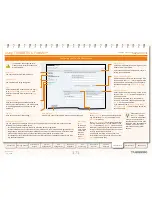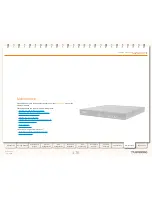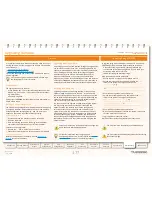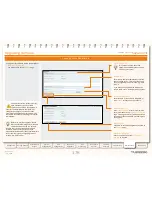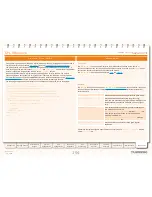
181
D14049.04
JULY 2008
Grey Headline
(continued)
TANDBERG
VIDEO COMMUNICATIONS SERVER
ADMINISTRATOR GUIDE
Introduction
Getting Started
Overview and
Status
System
Configuration
VCS
Configuration
Zones and
Neighbors
Call
Processing
Bandwidth
Control
Firewall
Traversal
Appendices
Applications
Maintenance
Option Keys
Your VCS may have been shipped with one or more optional features pre-installed. Additional VCS features can be added to your
existing system by the installation of Option Keys.
To view the list of options installed currently, go to
Maintenance > Option Keys
. You will be taken to the
Option Keys
page.
The options that you may see here include:
Expressway
•
:
enables the VCS to work as an Expressway™ firewall traversal server
H.323 to SIP Interworking gateway
•
: enables H.323 calls to be translated to SIP and vice versa
User Policy
•
: enables TANDBERG FindMe functionality
Dual Network Interfaces
•
: enables the LAN 2 port
Traversal calls:
•
determines the number of traversal calls allowed on the VCS at any one time. A traversal call is any call where the
VCS is required to take the media as well as the signalling, i.e. firewall traversal calls, calls that are interworked between IPv4 and
IPv6 calls, and calls that are interworked between SIP and H.323. Note that traversal calls that are passing through the VCS from
one neighbor to another but where neither endpoint in the call is locally registered will still be counted as one non-traversal call.
Non-traversal calls
•
: determines the number of non-traversal calls allowed on the VCS at any one time. A non-traversal call is any
call where the VCS is taking the signalling but not the media. Note that non-traversal calls that are passing through the VCS from
one neighbor to another but where neither endpoint in the call is locally registered will still be counted as one non-traversal call.
Registrations
•
: the number of concurrent
registrations
allowed on the VCS. An endpoint can register with more than one alias and
this will be considered to be a single registration. However, an endpoint that supports both SIP and H.323 and registers using both
protocols will count as two registrations. H.323 systems such as gateways, MCUs and Content Servers can also register with a
VCS, and these will each count as one registration.
Encryption
•
: indicates that AES encryption is supported by this software build.
Contact your TANDBERG representative for more information on how to purchase any of these additional features.
Once the appropriate Option Key has been purchased, options can be installed in either of two ways:
via the CL
•
I
.
via the web interfac
•
e
.
This section describes both methods.
To return the indexes of all the Option Keys that are already
installed on your system:
xStatus Option
•
s
To add a new Option Key to your system:
xConfiguration Option [1..64] Ke
•
y
Adding Options via the CLI
!
When using the CLI to add an extra option key, you can
use any unused option index. If you chose an existing
option index, that option will be overwritten and the extra
functionality provided by that option key will no longer exist. To
see which indexes are currently in use, type
xConfiguration option
.
Overview
Some option keys require that the VCS is restarted before the option key will take effect. In such cases you will receive a
warning on the web UI, which will remain in place as a reminder until the system has been restarted. However, you can
continue to use and configure the VCS in the meantime.





